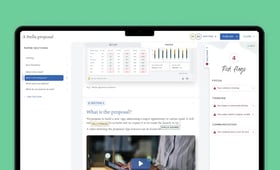What’s well-known, over 10 years old, and has little teeth?
Section 172 of the Companies Act (“S172”). It was also the subject of a discussion I chaired at this year’s ICSA conference with Byron Smith (COO & Head of Governance, Global Secretariat, HSBC) and Julian Baddeley (Deputy Group Company Secretary & Corporate Counsel, Aviva plc).
My opening gambit was that all board directors know about S172 but, until recently, most boards have shown little regard for it. Why? One reason is that no one has bothered to enforce it. For example, it didn’t stop Phillip Green dipping into the BHS pension pot, or avert hubristic CEOs pressing forward with doomed acquisitions — over two-thirds of acquisitions destroy value in the long term!
But 2019 is remarkably different. The Corporate Governance Code, for the first time, requires companies to produce a statement on how they’re supporting directors discharge their S172 duties. And at the individual level, there are cases being brought against directors because of S172. The legislation now has teeth and it will become a greater focus for regulatory enforcement.
Byron and Julian shared some wonderful examples of how they’re supporting their directors. Here are just two of them:
- The importance of management’s role in highlighting how their proposals and activities are impacting customers, their people, their communities, and the long term. It’s much easier to appraise the board of S172 considerations if it’s front of mind for the executive. To do this requires a systemic approach to education — both online and in person.
- Use a diverse range methods for engaging stakeholders — this ties nicely into the Corporate Governance Code’s emphasis on stakeholder engagement. From informal gatherings, unsupervised visits, to more formal attendance at management meetings, townhalls, customer conversations… give all your board members access to stakeholders, not just the nominated NED.
What are you doing about it?
Sure, if you’re a listed company or one of a substantial size, you’ll need to produce a statement (the Wates Annual Review 2018 provides a great example). But we’re more interested what you’re doing for your directors to help them discharge their S172 duties. No doubt you have various initiatives underway to engage with your stakeholders and your board will be aware of the long-term implications of their decisions.
How can you make your directors’ lives easier?
There are two main ways to help the board:
- Create space for the board to discuss your stakeholders and the long term;
- Give your board high-quality, timely information that speaks to the concerns of all stakeholders and how these decisions impact them in the long term.
Here are three suggestions:
1. Make time on your board agenda
The challenge
“Our board meetings are jam-packed already.”
“Our agenda is already overweight on governance.”
Our observation is that boards are not spending their time in the way they need or want to. They need to strike the right balance across strategy, performance, and governance. And do this in a way that aligns to the organisation’s needs — we shouldn’t have the (governance) tail wagging the dog.
The solution
Re-balance your board’s agenda.
Rather than starting with last year’s calendar of board meetings, work with your Chairman and CEO to determine what the board’s priorities should be. What are the big decisions it needs to take? What are the big items it needs to monitor?
You’ll find that these questions will stimulate a discussion about your customers, people, and community. We use the Board Intelligence 6 Conversations Model to facilitate this discussion. The result is a forward agenda that is focused, not on everything, but everything that matters. That’s the hallmark of a great board calendar.
2. Develop an organisational health check on a page
The challenge
“Shareholder returns dominate our performance discussions.”
“We get lots of financial data but very little on people, customer, and the drivers of financial performance.”
Board packs are bloated and overflowing with data, some spurious, some with material messages hidden in their depths. It’s a dangerous combination that results in your directors not being able to see the wood for the trees and not being able to do their job effectively.
The solution
Tell the story of your organisation, through numbers, with an organisational dashboard.
It’s called a health check on a page because as with any living organism, its output is a function of a multitude of interactions, not just money. And it’s powerful because of its simplicity and focus. On a page, you quantify answers to some very important questions:
- How does this organisation create value?
- How do you retain your licence to operate?
- Why do your customers buy from you rather than your competitors?
- What is your purpose and are you fulfilling it?
The organisation dashboard is more than a balanced scorecard — it’s not simply a collection of KPIs segmented by functional area. And developed smartly, it provides a blueprint for all supporting management information in the firm. It’s also an antidote to the financial-heavy reporting we see in most board packs. And on S172, it demonstrates how the top of the house is focused on a more balanced view of the concerns of all stakeholders, not just shareholders.
3. Give your board high-quality decision papers
The challenge
“What alternative options were considered?”
“I can see how this proposal impacts this year’s results — what about year 3 and beyond?”
Boards shape and take decisions that determine the fate of their organisations. Sometimes things go well, sometimes disastrously. When things go wrong, boards need to demonstrate that, at the point of taking a decision, they chose the best course of action with regard to the implications in the long term and their stakeholders, given the information they had.
The process by which boards take decisions (how they are monitored and reviewed) and the information they get are the two biggest drivers of a better outcome. The other factor appears to be a very human quality — how we exercise our judgement given the cognitive biases that prevail in a group and the individual.
The solution
Make it easy for management to write consistently high-quality decision papers.
We hear from Company Secretaries who have tried and, to varying degrees, failed to improve the content and reduce the size of their board pack. Most start with a template and some written guidance, some review, and amend papers at the eleventh hour (painful and stressful!). Others send management on ‘how to write’ courses. It’s a minefield and delivers patchy results. Crucially, none of it sticks and that’s because behaviour is not re-wired.
Writing doesn’t start in front of a keyboard — it starts with your thoughts and language gives shape to those thoughts. At Board Intelligence we start with questions to unpack the big idea or message you want to convey. We use a combination of things: briefing, education, writing tools, self-assessment, and board feedback. In combination, these levers deliver a lasting change — making it quicker for management to produce decision papers that are concise, evidenced, and cover the questions on the board’s mind, including those S172 considerations.



